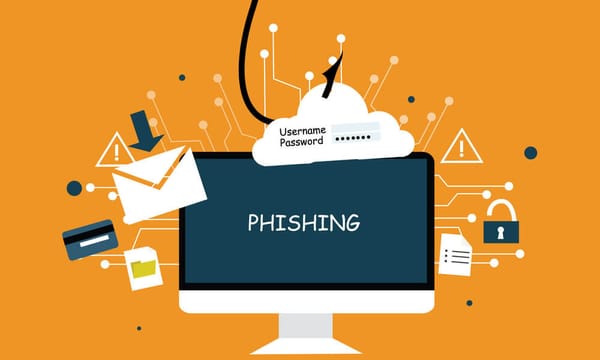Advanced Cloud Security Tactics: Real-World Techniques for Experts

Securing cloud environments is a never-ending challenge for cybersecurity experts. Traditional security measures, like IAM policies and encryption, are essential but often insufficient against sophisticated threats. Attackers are becoming increasingly adept at exploiting the nuances of cloud infrastructure, requiring defenders to adopt advanced and nuanced tactics.
Cloud environments are dynamic, decentralized, and interconnected, creating an attack surface that continuously evolves. To effectively secure these environments, cybersecurity professionals must think beyond conventional practices and implement innovative, adaptive strategies. In this article, we delve into advanced techniques that go beyond basic security practices, incorporating real-world examples and practical implementations.
Deception and Decoy Strategies in Cloud Environments
Advanced attackers rely on reconnaissance to map your cloud assets before launching targeted attacks. Introducing deception technology into your environment can significantly disrupt their efforts. One highly effective approach is to deploy decoy services that mimic critical infrastructure components.
Imagine deploying a fake S3 bucket labeled as « sensitive-data-backup » within your AWS environment. The bucket contains files named after important business units, but the content itself is non-sensitive. Any interaction with this decoy triggers an immediate alert to your SIEM. In practice, this technique provides early warning signs of reconnaissance activities, helping you to detect and neutralize attackers before they reach actual data.
Another useful tactic is to inject honey tokens into serverless environments. For example, placing fake API keys or access tokens within environment variables can lure attackers attempting to exfiltrate credentials. Monitoring the usage of these tokens gives precise indications of compromised workloads or insider threats.
Cloud providers offer native support for deception strategies. AWS Config can be used to monitor unexpected API calls, while AWS Lambda can automate responses by disabling compromised keys and isolating affected instances. Integrating these alerts with AWS GuardDuty creates a robust early warning system that actively fights against advanced persistent threats.
Adversary Emulation and Red Teaming in the Cloud
To assess the resilience of cloud environments, red teaming has evolved into adversary emulation, replicating sophisticated attack techniques that real-world adversaries might use. A practical approach involves mimicking common tactics seen in modern cloud breaches, such as lateral movement and privilege escalation through IAM role chaining.
One effective scenario involves creating a compromised IAM role with minimal privileges. An attacker may attempt to escalate privileges by exploiting overly permissive role policies. To test this, an emulated attacker can use AWS CLI commands to enumerate roles and assume privileges via sts:AssumeRole. Setting up a CloudTrail filter to detect unusual AssumeRole API calls can catch this behavior in real time.
For Azure environments, adversary emulation often targets identity compromises and data exfiltration through Azure Blob Storage. Running simulated data exfiltration using automated scripts allows defenders to evaluate how well data loss prevention (DLP) policies respond to bulk data transfers. Integrating these simulations with Microsoft Defender for Cloud helps map threat vectors to real-time alerts and automated remediation actions.
Dynamic Privilege Management and Just-in-Time (JIT) Access
Static privilege assignments are a major liability in dynamic cloud environments. Attackers exploit stale or overly permissive roles to escalate privileges. Transitioning to dynamic privilege management mitigates this risk by assigning permissions on a just-in-time basis.
A practical implementation is to use AWS IAM Identity Center (formerly AWS SSO) to enable short-lived credentials for critical operations. When an engineer needs to perform administrative tasks, the system grants a time-bound token, which is immediately revoked after task completion. This drastically reduces the attack surface and mitigates the impact of stolen credentials.
Similarly, Azure Active Directory (AAD) supports Privileged Identity Management (PIM) to enable JIT access for high-privilege accounts. Monitoring access request logs through Azure Monitor ensures that abnormal access patterns are quickly flagged. Automating this monitoring with Sentinel queries helps identify abnormal access attempts within minutes.
Runtime Security for Serverless Architectures
Serverless functions are inherently ephemeral, but this characteristic does not exempt them from security scrutiny. Attackers commonly exploit misconfigured functions to execute code remotely or perform privilege escalation. Real-time monitoring and runtime security are essential to protect these lightweight yet powerful workloads.
A practical example involves monitoring AWS Lambda function execution through AWS CloudWatch Logs. By analyzing runtime behavior with anomaly detection algorithms, it becomes possible to detect unusual execution patterns, such as unexpected outbound connections or excessive function invocations.
For Google Cloud Functions, integrating with Cloud Security Command Center (CSCC) enables centralized visibility. Setting up alert triggers for abnormal API call rates or unauthorized function modifications can help detect and respond to attacks in real time.
Integrating serverless function security with Infrastructure as Code (IaC) pipelines ensures that new deployments are automatically scanned for vulnerabilities and configuration flaws. Implementing tools like Checkov or Terrascan directly within CI/CD pipelines helps enforce security baselines before code reaches production.
Adaptive Threat Intelligence and Real-Time Correlation
Modern cloud threats are increasingly adaptive, leveraging sophisticated evasion techniques. Static security configurations are inherently flawed in this context, as they fail to account for emerging attack techniques. To counter this, adaptive threat intelligence must be tightly integrated with cloud security monitoring.
One effective approach involves leveraging AWS Security Hub to aggregate security findings across multiple AWS services. By correlating GuardDuty alerts with VPC flow logs, you can quickly identify data exfiltration attempts masquerading as routine traffic. Adding contextual threat intelligence from external feeds further enriches the detection process, allowing for automated responses through AWS Lambda functions.
In multi-cloud environments, combining threat feeds from Azure Sentinel and Google Chronicle with a centralized SIEM offers a holistic view of threats across platforms. Real-time data correlation enhances the accuracy of threat detection and reduces false positives by providing richer context around each alert.
Post-Incident Analysis and Threat Hunting
When a cloud breach does occur, understanding the full extent of the compromise is paramount. Comprehensive post-incident analysis involves retrieving CloudTrail logs, VPC flow logs, and function execution data to reconstruct the attacker’s path. Techniques such as memory forensics on compromised instances or analyzing AWS Lambda container snapshots help identify how attackers escalated privileges or exfiltrated data.
Threat hunting should not be a passive exercise but rather an ongoing practice. Proactively scanning cloud environments for indicators of compromise (IOCs) and suspicious patterns allows defenders to detect hidden threats before they escalate. Advanced threat hunting frameworks, like Elastic Security or Azure Sentinel’s hunting queries, can automate much of this work while allowing for manual correlation when needed.
Conclusion
Cloud security requires a paradigm shift from static defenses to dynamic, context-aware strategies. Integrating deception techniques, adversary emulation, and adaptive threat intelligence allows cybersecurity professionals to outpace evolving threats. The key lies in continuously refining defenses based on real-world attack patterns and leveraging automation to minimize human error.
Cybersecurity professionals who understand how to blend these advanced tactics into their cloud security practices will not only stay ahead of attackers but also build resilient, adaptable environments capable of withstanding modern threats.




